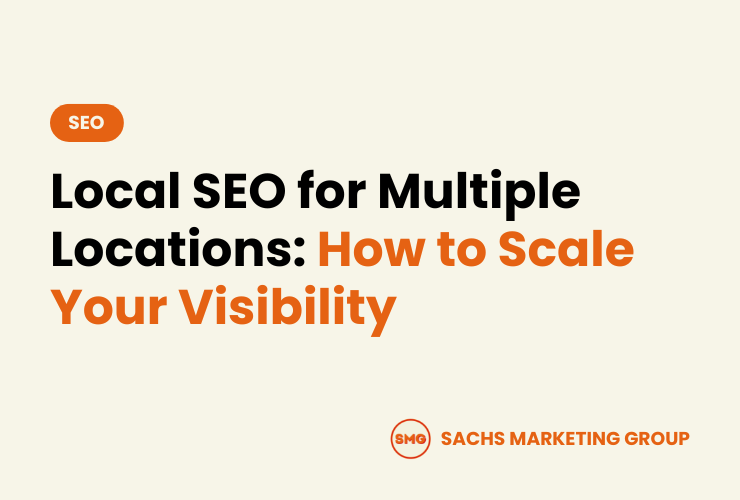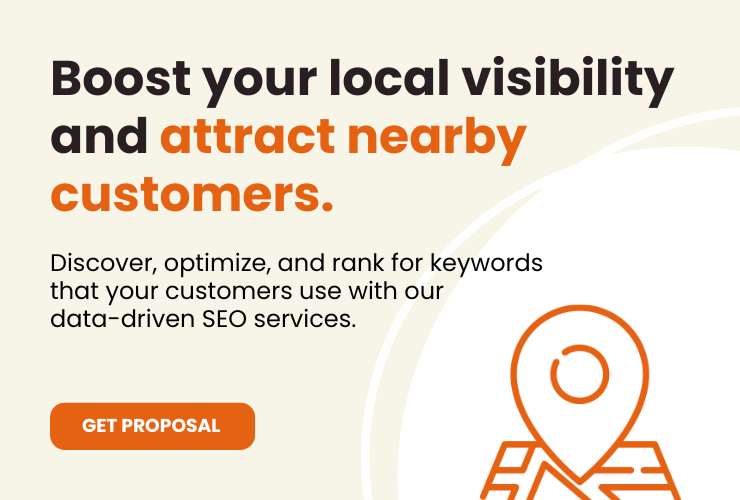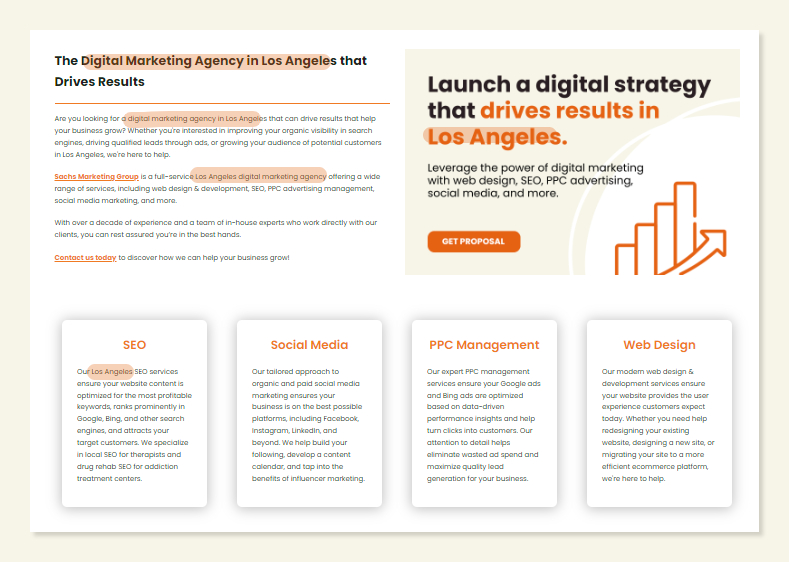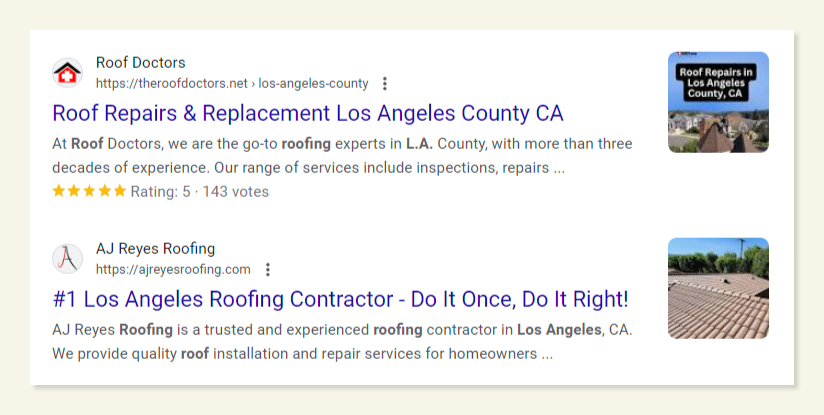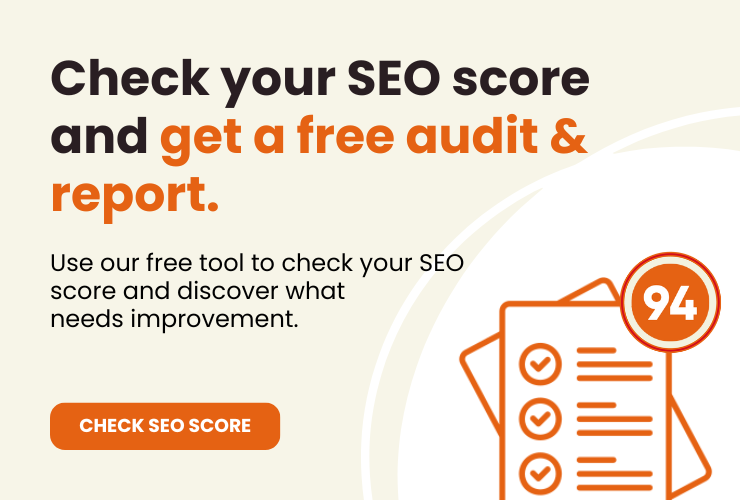Local SEO for multiple locations boosts a business’s visibility by optimizing each branch for local search results. This targeted approach ensures each location appears prominently in local searches, attracting more local customers. Businesses can reach a broader audience by enhancing their online presence through consistent NAP details, localized content, and Google Business Profiles, driving growth and scaling their visibility effectively.
Many businesses struggle to increase their brand’s visibility in multiple locations. Whether you have physical locations in different areas or want your brand to appear in searches across various regions, competing in local search results can feel like an uphill battle.
Search engines are very good at displaying relevant information, and results are tailored based on your location. For this reason, it’s become difficult for companies, particularly those in the home services industry, to target multiple locations beyond their city, county, and state.
This is where local SEO comes into play. Local SEO is a specific search engine optimization approach focusing on local visibility.
This article will explain how to perform local SEO for multiple locations, expand your business’s visibility on search engines, and attract more customers from different areas.
Key takeaways:
- Create dedicated pages for each business location with specific details (name, address, phone number, services, hours, reviews) and maintain consistent NAP information across all online platforms.
- Optimize location pages with relevant local keywords and encourage customer reviews. Positive reviews improve reputation and local search rankings, while optimized keywords help match the business with local search queries.
- Set up and regularly update Google Business Profiles for each location, build local citations in reputable directories, and attract backlinks from local community websites to boost credibility and improve local SEO performance.
Overview
What is Local SEO?
Local SEO focuses on optimizing your website for local search on Google and other search engines. The goal is to increase visibility in specific areas. Local SEO helps businesses promote their products and services to local prospects and customers. Local SEO for multiple locations involves tailoring your optimization strategies to ensure that each business location can be found in local search results, regardless of the user’s location.
Related: Why Local SEO is Important for Your Business
Local SEO for Multiple Locations (10 Steps)
Managing local SEO for multiple locations involves a specialized approach to ensure each location gets the visibility it deserves.
This can be complex, but the right strategies make it manageable. We work with various companies in the home services industry, so we’ve pulled together some tips we think will help you get started.
Here are 10 steps to performing local SEO for multiple locations:
1. Create Location Pages
Creating location pages is crucial for local SEO because they provide specific details about each business location, helping search engines and customers understand and find relevant information. These pages enhance local visibility, improve search rankings, and attract more local customers by including localized keywords, accurate NAP details, services offered, operating hours, and customer reviews.
Each page should provide specific details about that location:
- Business name
- Address
- Phone number
- Services
- Operating hours
- Location
- Reviews
The goal of each location page is to answer the business’s who, what, when, where, and why.
- Who: Business name, address (or service area), phone number
- What: Services
- When: Operating hours
- Where: This is the location you’re targeting with the location page
- Why: Reviews, license, certification, guarantees, etc. (why people should work with you)
Location pages do not need to be 1500 words long. Our SEO team has discovered that sometimes less is more, depending on the industry and search results. For example, by removing content from location pages, we recently helped a client in the home services niche rank prominently across 25+ locations throughout two counties.
2 Optimize for Local Keywords
Optimizing for local keywords is crucial to appear in search results for your specific areas. Start by researching keywords that potential customers in each location might use. Tools like Google’s Keyword Planner can help identify popular local search terms.
Incorporate these keywords naturally into your location pages, including titles, meta descriptions, headers, and body text.
For example, therapists might optimize for keywords like “therapist in Los Angeles” or “Los Angeles therapy.”
Focus on creating informative and engaging content, and avoid going overboard with keywords (this is known as keyword stuffing).
Local keywords help search engines understand where your business operates and match it with relevant search queries. This targeted approach increases your chances of appearing in local search results, attracting more local customers.
Check out our Los Angeles location page and notice how we use Los Angeles keywords: Digital Marketing in Los Angeles
Related: How to Improve Local SEO Rankings
3 Set Up Google Business Profiles for Multiple Locations
Your Google Business Profile is essential for local SEO. Start by creating a profile for each location with accurate and consistent details, including your business name, address, phone number, and website URL.
Add high-quality photos of your business, showcasing the exterior, interior, and special features. Choose the appropriate categories that best describe your business. Encourage local customers to leave reviews and respond to them promptly.
Update your profiles regularly with new photos, posts about events and offers, and any changes in operating hours. Google Business Profiles help your business appear in local search results and on Google Maps, making it easier for customers to find you and learn more about your offerings.
Related: 10 Google Business Profile Optimization Tips
4. Attract Reviews for Each Location
Encourage satisfied customers to leave positive reviews by asking them directly after a purchase or service. Make it easy for them by providing links to your Google Business Profile in follow-up emails or on your website.
Respond to all reviews, both positive and negative. This shows that you value customer feedback and are committed to improving. Positive reviews enhance your reputation and significantly impact potential customers’ decisions.
Highlight positive testimonials on your location pages to build credibility. Regularly monitoring and managing reviews will help you maintain a positive online presence. This approach helps improve your local search rankings and attracts more customers to each location.
Attracting reviews isn’t easy, but we have some tips to help you get started. Check out our tips on how to increase reviews on Google.
5. Create Local Citations
Local citations mention your business’s name, address, and phone number (NAP) on various sites.
Start by identifying reputable directories relevant to your industry and region. Think Yelp, Yellow Pages, and local business directories. Submit your business information accurately and consistently to these platforms.
Local citations signal to search engines that your business is legitimate and established, improving your rankings. They also make it easier for potential customers to find you when searching for local services.
Update your citations regularly to ensure all information is current. The more consistent and widespread your citations, the stronger your local SEO presence will be. This consistency will drive more local traffic to your business, helping you grow.
6. Be Consistent with Your NAP
Maintaining the consistency of your name, address, and phone number across all online platforms is essential for effective local SEO. Start by standardizing your business’s NAP information and using the exact format everywhere it appears online.
This includes your website, Google Business Profiles, social media accounts, and online directories. Consistent NAP details help search engines verify your business information, boosting local search rankings. It also ensures customers can easily find and contact you without confusion.
Audit your listings regularly to check for discrepancies and correct any inconsistencies. Even small variations in your business name or address can impact your local SEO efforts. Maintaining NAP consistency builds trust with search engines and potential customers, leading to better visibility and increased local traffic.
7 Attract Local Backlinks
Backlinks from local community or industry websites help increase the credibility of your business in a specific location.
Start by identifying local websites. Think community blogs, local news sites, and business directories. Reach out with relevant content. Guest blog posts or news about local events your business is involved in are great options.
Build relationships with local influencers and organizations. These connections can lead to valuable backlinks. Hosting or sponsoring local events can generate buzz and media coverage, resulting in more backlinks.
Local backlinks signal to search engines that your business is a trusted community member. This improves your local search rankings. The more quality local backlinks you have, the more authoritative your website appears, attracting more local customers.
8. Build Internal Links
Building internal links to location pages helps search engines understand the structure and relevance of your site.
It also improves navigation, ensuring customers can easily find location-specific information. This can help boost each location’s visibility in local search results, driving more targeted traffic and enhancing overall SEO performance.
Here’s how to do it effectively:
- Link location pages to main service pages: This helps visitors and search engines understand the relationship between your services and locations.
- Create a location directory page: A central page that links to each location page makes navigation easy and boosts SEO.
- Use location-based anchor text: Doctors might use phrases like “doctor in Los Angeles” to to help search engines recognize each link’s relevance.
Include links in blog posts: Write about local events or services and link to the relevant location pages.
Internal links improve site navigation, help search engines index your site, and boost the SEO value of each page. This strategy enhances your local search rankings and helps customers find the right location easily.
9. Leverage Local Schema Markup
This is pretty advanced, but it can be essential for certain businesses. Schema markup is a form of microdata that you can add to your website’s code to help search engines understand your content better.
It can help enhance your page’s representation in search results by providing additional information, such as business details, reviews, and event dates. Have you ever noticed that some search results have a star rating under their link? That’s schema markup at work!
This can be a game-changer for home service providers who want to appear in search results for multiple locations.
For example, roofing companies can create a new location page and add schema markup to make sure search engines see the company’s location information, including reviews from customers in that location. This helps communicate the company’s rating in that location, and Google may reward that effort by displaying the rating upfront. This helps their page stand out in search results, which can drive more clicks to the website.
Here’s what it looks like:
Notice how the star rating helps the first result stand out more than the second result? Your customers notice this, too!
10. Track Local Rankings & Traffic
To monitor your local SEO performance effectively, use tools like Google Analytics, Google Search Console, and local SEO platforms such as BrightLocal or Moz Local. These tools help you track how well your business appears in local searches by regularly checking keyword rankings.
Analyze your traffic sources, paying attention to direct traffic, organic search, referrals, and social media. Reviewing Google Business Profile insights lets you understand how customers interact with your business and track conversions to measure leads or sales from local traffic.
Additionally, evaluate user engagement metrics like bounce rate and session duration to see how effective your content is. Use this data to refine your strategy and continuously improve. Regular reporting allows you to identify trends, plan future actions, and align your team with common goals.
Related: 21 Analytics Tools for Digital Marketing
Our Local SEO Services
Are you interested in attracting customers from multiple locations? Sachs Marketing Group can help!
As a full-service digital marketing agency, our SEO team specializes in local SEO for some of the most competitive industries. We create tailored strategies designed to help increase your business’s local visibility.
Contact us today to discuss how we can help your business improve its local visibility and attract more customers.
Frequently Asked Questions
When it comes to local SEO for multiple locations, you likely have many questions. Here are answers to some of the most common questions about the topic:
How do I set up a Google Business Profile for multiple locations?
Create a separate listing with the unique address, phone number, and category to set up a Google Business Profile for each location. Verify each one. If you have ten or more locations, use the bulk location management tool to make it easier and keep everything accurate.
What are the best practices for creating unique location pages?
Include local information, photos, and customer reviews for each location page. Use unique titles and descriptions. Add a Google Map with the location marked and mention local promotions or events. Make sure to use relevant local keywords on each page.
How can I ensure NAP consistency across all my business listings?
Use the same format everywhere to keep your business name, address, and phone number (NAP) consistent. Regularly check and update your listings on directories, social media, and your website. Use tools like Moz Local or Yext to help manage and sync your information across different sites.
What tools can I use to manage local citations for multiple locations?
You can use tools like Moz Local, Yext, or BrightLocal to manage local citations for multiple locations. These tools help you keep your business information consistent across different directories and platforms, making it easier to update and sync your details everywhere.
How do I optimize my website for local keywords specific to each location?
To optimize your website for local keywords, create dedicated pages for each location and include local keywords in the titles, headers, and content. Mention local landmarks or events and use these keywords naturally throughout the page. This helps search engines understand which area each page is targeting.
What strategies can I use to gather and manage reviews for each location?
Encourage satisfied customers to leave reviews by asking them in person, by email, or via social media. Make it easy by providing links to your review pages. Respond to all reviews, both positive and negative, to show that you value customer feedback and are committed to improving.
How can schema markup improve my local SEO for multiple locations?
Schema markup can improve your local SEO by helping search engines understand your business details better. Add LocalBusiness schema to each location page to include information like address, phone number, and business hours. This can enhance your listings in search results with rich snippets, making them more attractive to potential customers.
What are the most effective ways to build local backlinks for multiple locations?
Connect with local businesses, blogs, and news sites for link exchanges or guest posts to build local backlinks. Sponsor local events or charities to get mentioned on their websites. List your business in local directories and engage with local influencers who can link to your site. Avoid “blackhat” link-building tactics, as these can result in penalties that reduce your visibility in search engines.
How do I track the performance of my local SEO efforts for different locations?
Use tools like Google Analytics and Google Search Console to monitor traffic and keyword rankings for each location. Set up location-specific goals and track conversions. Tools like BrightLocal and Moz Local can also provide detailed reports on each location’s local search performance and visibility.
What common mistakes should I avoid when doing local SEO for multiple locations?
Avoid these common mistakes: relying too much on duplicate content for location pages, neglecting to update NAP information consistently, failing to collect and manage reviews, and not optimizing each location page with unique local keywords. Regularly check all listings for accuracy and ensure each page is tailored to its specific location to maximize your SEO efforts.
Conclusion
Local SEO for multiple locations is a powerful strategy for increasing your business’s visibility across various regions.
Following the steps outlined in this article, you can effectively scale your local SEO efforts and attract more customers. Whether you operate in multiple cities, counties, or states, implementing local SEO for multiple locations will help your business stand out in local searches and drive growth.
Managing local SEO for multiple locations can significantly boost your visibility and attract more customers. By following these tips and best practices, you can ensure each location gets the attention it deserves. If you have any questions or need further guidance, feel free to ask! We’re here to help you navigate the complexities of local SEO and achieve your business goals.
Contact us today to get the conversation started!

